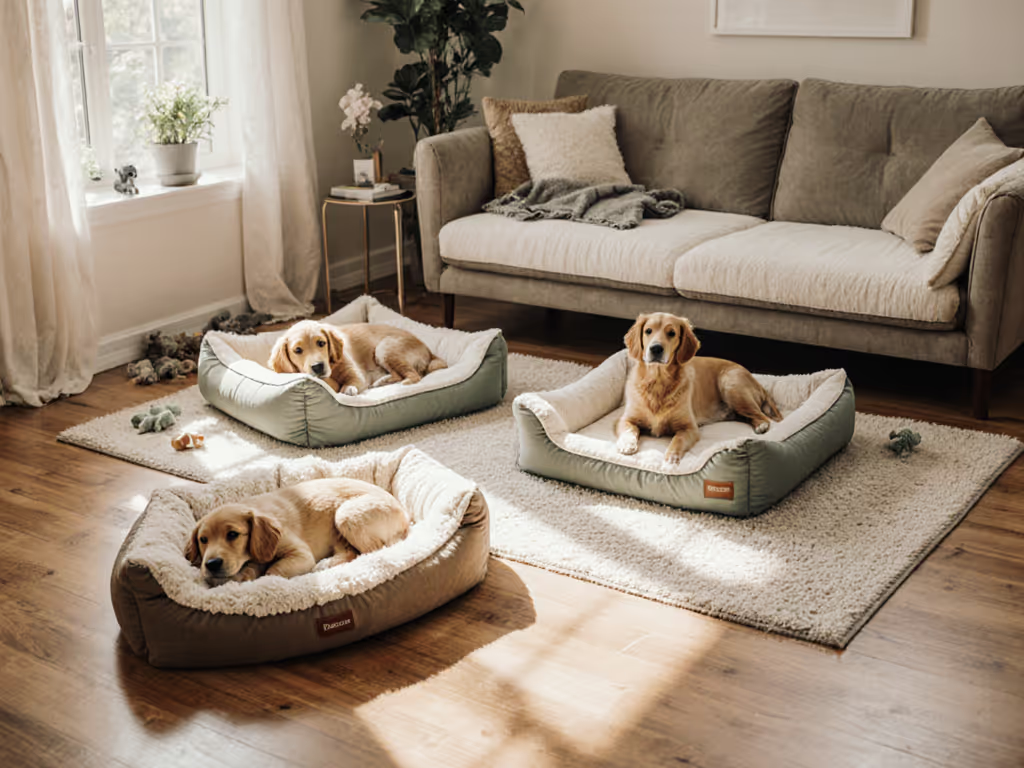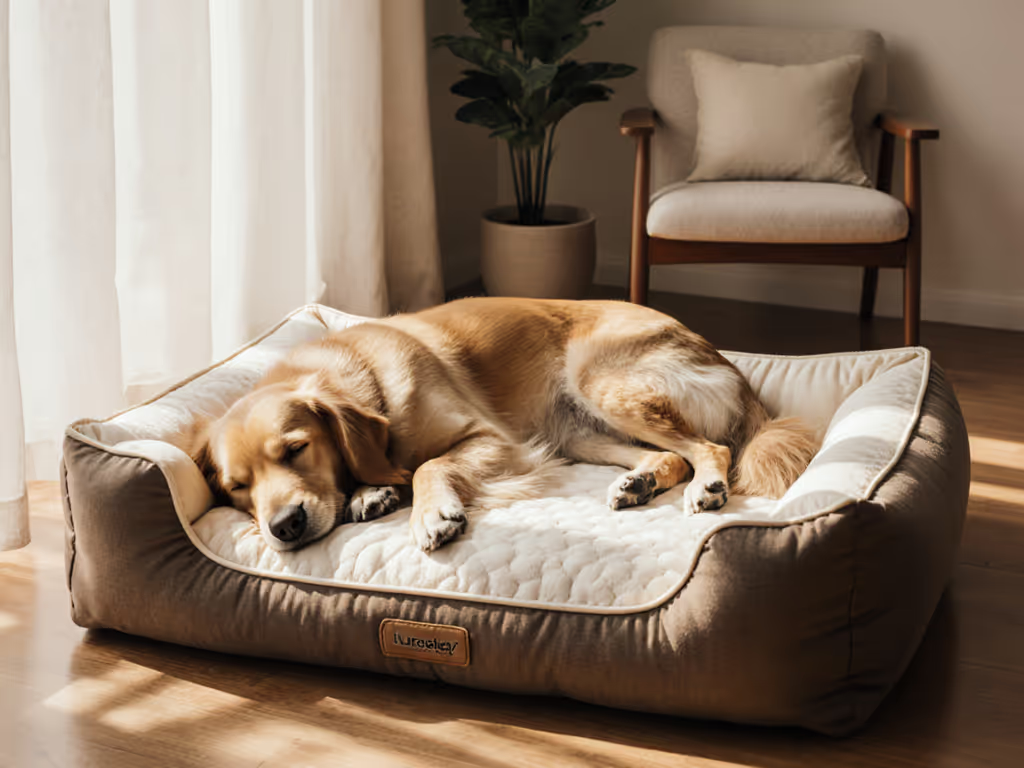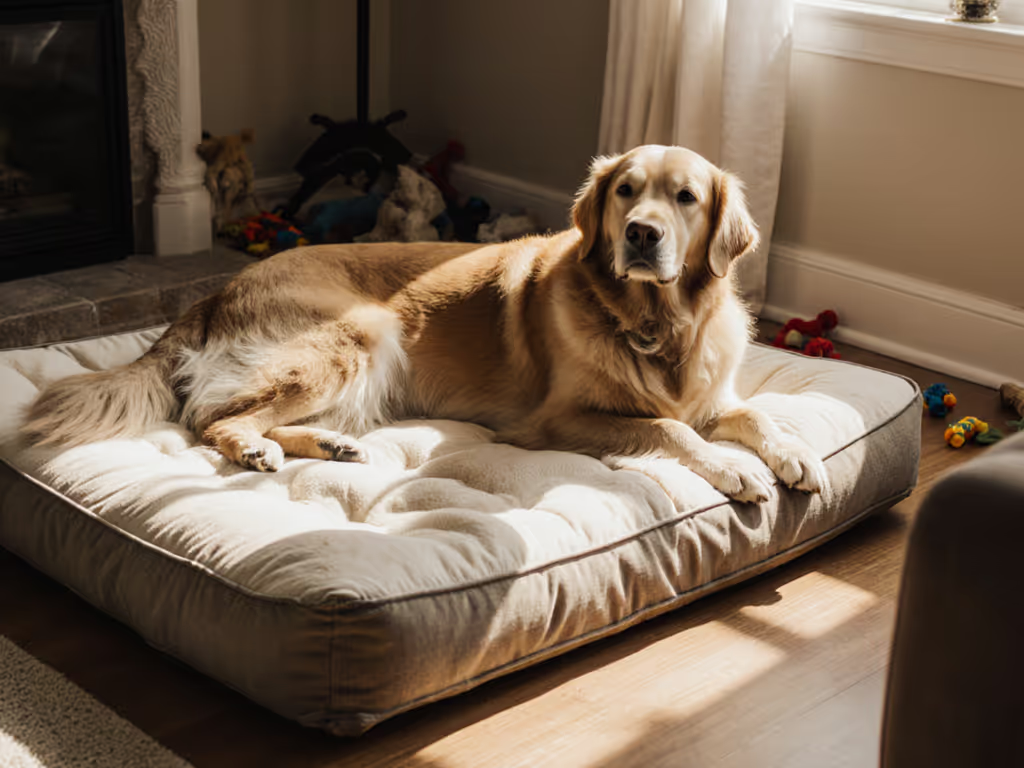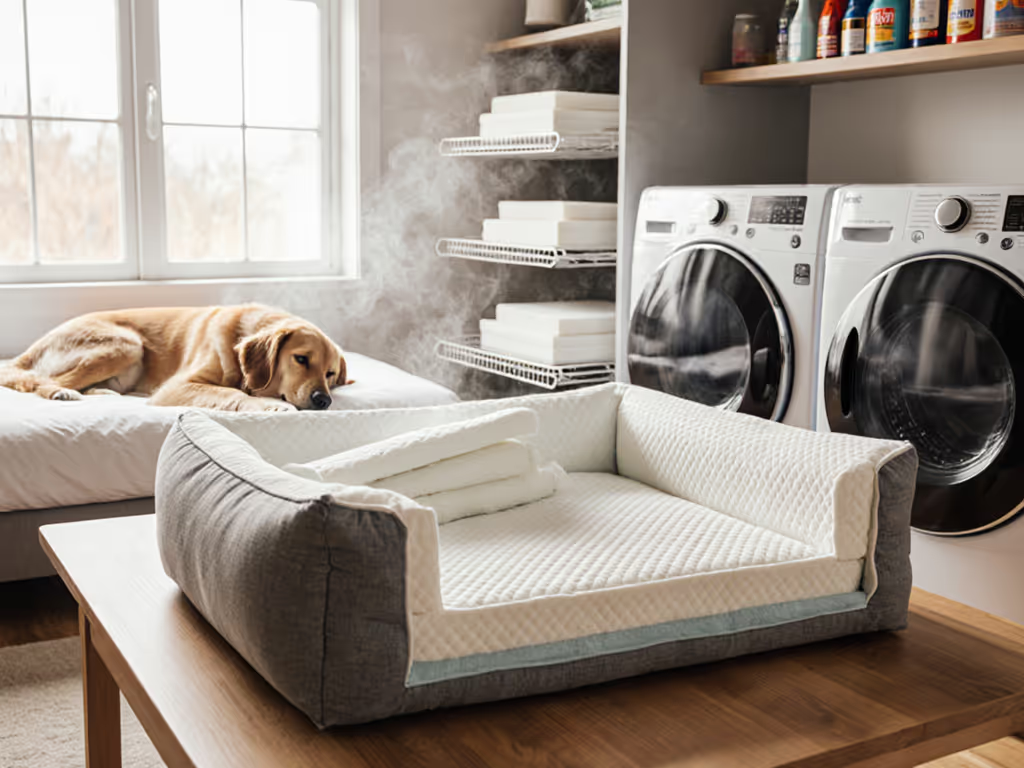
Optimal Dog Bed Placement: Where Your Dog Actually Sleeps
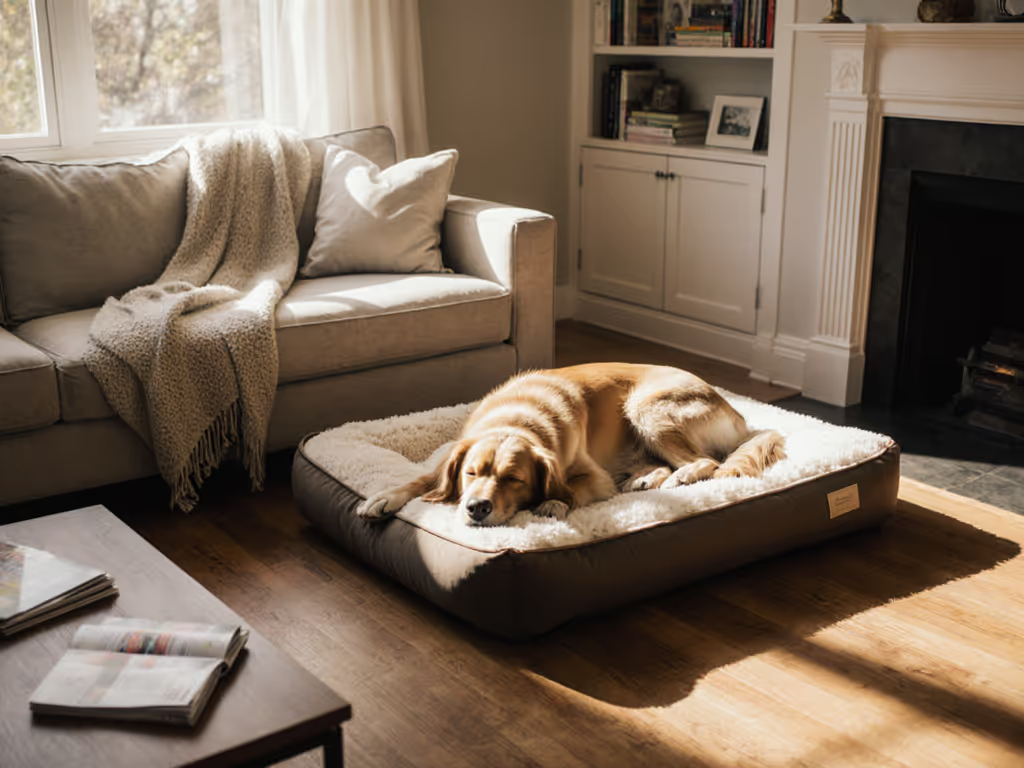
As any pet parent discovers after watching their pup abandon a carefully selected dog bed for the cold kitchen tile, placement matters as much as padding. Finding the optimal dog sleeping location isn't about convenience, it's about reading your dog's silent cues. Where your dog chooses to sleep reveals insights about their comfort needs, stress levels, and physical well-being. In this guide, we'll decode the behavioral science behind canine sleep spots using real-world data and posture mapping principles, so you can stop guessing where to place that dog bed you invested in.
Why Your Dog's Chosen Spot Isn't Random
Dogs don't pick sleeping locations on whimsy. Their choices reflect deeply ingrained survival instincts, temperature needs, and joint comfort. A 2023 Canisius University study tracking over 1,000 dog owners revealed that nearly 70% share sleeping spaces with their dogs, but crucially, optimal dog sleeping location varies widely based on individual behavior. Some curl into bathroom corners; others sprawl across hallways. This isn't disobedience, it's communication.
The Hidden Language of Sleep Positions
Your dog's posture reveals their environmental needs: For deeper postural cues, see our guide to dog sleeping positions.
- Curled-up (nose-to-tail): Seeks warmth and security. Common in puppies or anxious dogs. Placement clue: Needs enclosed spaces away from drafts.
- Sprawled-out belly-up: Actively cooling down. Placement clue: Requires breathable surfaces near airflow.
- Side-sleeping with limbs extended: Signals relaxation but possible joint sensitivity. Placement clue: Needs even pressure distribution across limbs.
Real comfort starts with alignment, then temperature and texture. Ignoring this leads to restless nights and sore mornings.
I've fostered senior dogs whose stiff movements vanished once we matched their sleep posture to supportive surfaces, like the shepherd mix who refused all plush beds until we placed a firm, bolstered mat in the quiet corner he'd secretly claimed. He stopped circling and sank in immediately. For aging or arthritic pups, a raised orthopedic bed can reduce pressure on elbows and hips while still fitting the spot they prefer. That's when it clicked: we must honor where they sleep before obsessing over what they sleep on.
The Data-Driven Placement Guide
Forget one-size-fits-all advice. Based on sleep posture mapping and environmental analysis, here's how to place your dog bed where your dog will actually use it.
Room-by-Room Strategy
Living Areas: The "Pack Zone"
- Best for: Social breeds, puppies, or dogs with separation anxiety
- Science-backed insight: Dogs are pack animals. A 2017 Mayo Clinic Proceedings study noted that proximity to family improves sleep efficiency for 68% of dogs.
- Placement tip: Put the bed 3-5 feet from frequent human activity (e.g., near your sofa but not underfoot). Avoid high-traffic pathways (constant movement disrupts REM cycles). Choose beds with bolsters to create psychological "walls" in open spaces.
Bedrooms: Co-Sleeping Reality Check
- Critical data point: 49% of owners let dogs sleep in their bed (Canisius University), but 65.6% report no sleep disruption from their dog.
- Key nuance: Placement depends on your dog's size and sleep style. Large sprawlers need floor space beside the bed (not on it), while small curlers may prefer a compact bed at your feet.
- Placement tip: If your dog joins you in bed, provide a dedicated dog bed on the mattress. It creates defined boundaries and reduces joint strain from uneven surfaces.
Quiet Corners: Security Havens
- Most common placement: 49.1% of puppies sleep in crates/kennels (per PMC study), shifting to dedicated beds by age one.
- Why corners win: Walls provide security through "pressure points" on their sides, a calming effect validated by veterinary behaviorists.
- Placement tip: Position the dog bed with raised bolsters against two walls. Avoid placing beds directly under windows (drafts) or near appliances (vibrations).
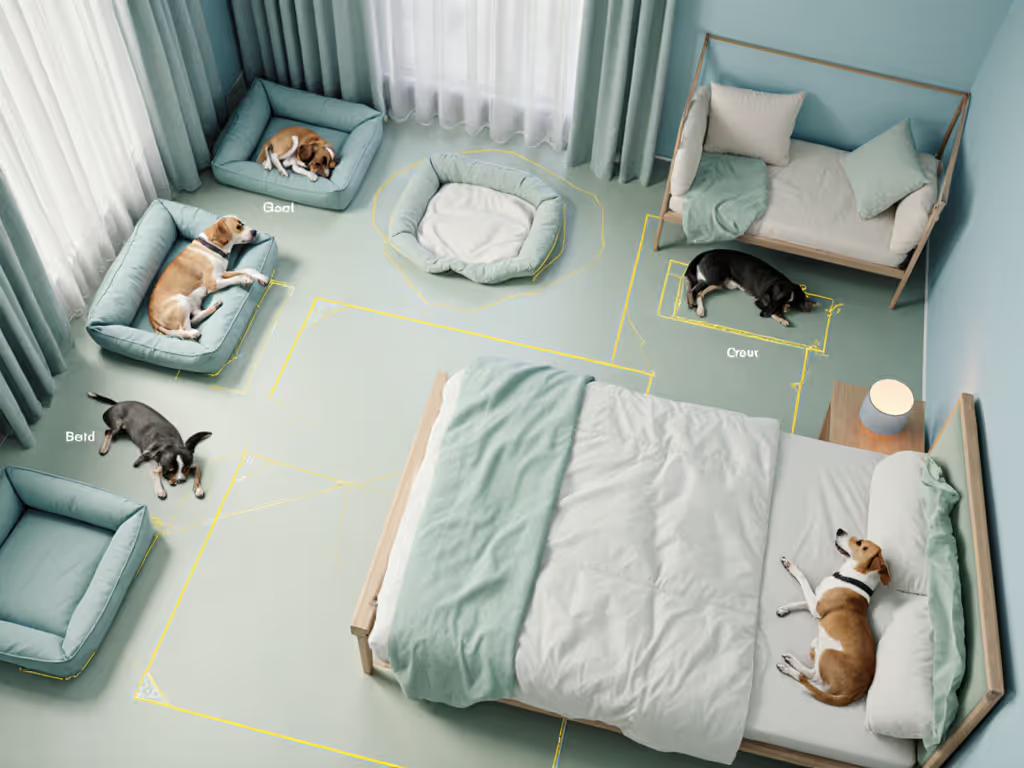
Climate & Surface Considerations
Overheating causes more bed abandonment than poor sizing. Dogs regulate temperature through paw pads and belly fur, so placement dictates comfort: If your home runs warm, consider cooling dog beds that passed our wash and chew tests to complement smart placement.
- Hot climates: Place beds on tiled or wood floors (not rugs) in rooms with cross ventilation. Avoid south-facing windows.
- Cold climates: Elevate beds 2-3 inches off cold floors using slatted bases. Never place near vents, since direct airflow stresses joints.
- Allergy alert: Carpeted areas trap dander. Opt for hard-surface rooms if your dog has sensitivities.
Solving Your Top Placement Pain Points
"My Dog Ignores the Bed Completely"
This usually means the optimal dog sleeping location conflicts with their natural instincts. Before replacing the bed:
- Observe for 3 nights: Note where they naturally settle (e.g., hallway, laundry room).
- Match bed type to location: A bolstered bed for corner curlers; a flat mat for sprawlers in open areas. Not sure which shape fits your pup? See our donut vs flat dog beds guide for sleep-style matches.
- Relocate gradually: Move the bed 1-2 feet daily toward your preferred spot after they accept the initial placement.
"They Only Sleep on My Bed"
Studies confirm co-sleeping rarely harms human sleep, but it strains canine joints on soft mattresses. Create a trusted alternative:
- Place their dog bed on your bed for 7 days (using removable, washable covers).
- Gradually slide it to the floor beside the bed over 2 weeks.
- Use identical fabrics so the texture feels familiar.
"They Roam Between Rooms All Night"
This signals insecurity or discomfort. Address with:
- Consistent bedtime routine: Tie sleeping location to calming activities (e.g., final bathroom break = bed time).
- Temperature zoning: Keep their designated room 5-7 F cooler than living areas (mimicking den environments).
- White noise: Masks anxiety-triggering sounds in isolated areas.
Your Action Plan: Placement That Works
True dog comfort zones emerge from observation, not assumptions. This week, track your dog's natural habits:
- Map their movements: Note where they sleep at 9 PM, midnight, and 6 AM for 3 nights.
- Match environment to posture: Does their chosen spot support their sleep style? (e.g., cool floor for sprawlers).
- Adjust one variable: Move the bed only after identifying their preferred temperature, security, and surface needs.
Real comfort starts with alignment, not plushness. Honor where your dog wants to sleep, then engineer the perfect dog bed for that spot.
When you place a bed according to your dog's silent signals, not your convenience, you'll see the change instantly: deeper sleep, fewer restless tosses, and that quiet sigh of relief when they finally sink in. Start tonight. Watch where they go. Then position the bed. It's the simplest step toward transformative rest.
Your next step: For the next 72 hours, keep a "sleep diary" tracking your dog's chosen spots and positions. You'll uncover the blueprint for their optimal dog sleeping location - no guesswork required.

